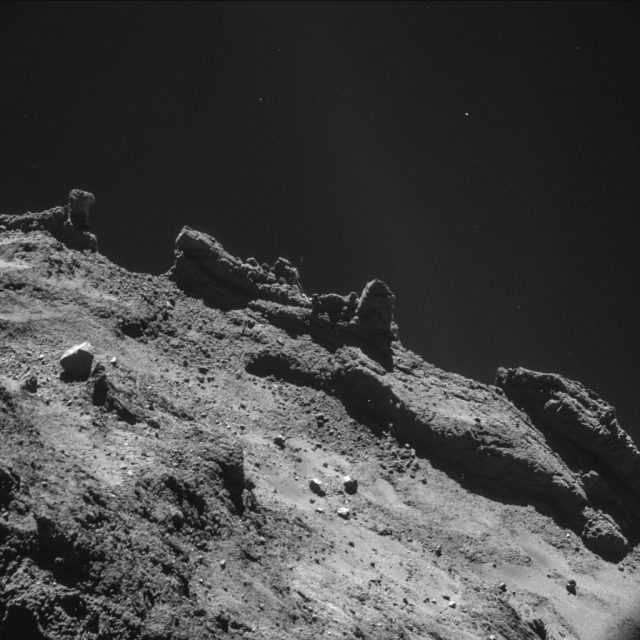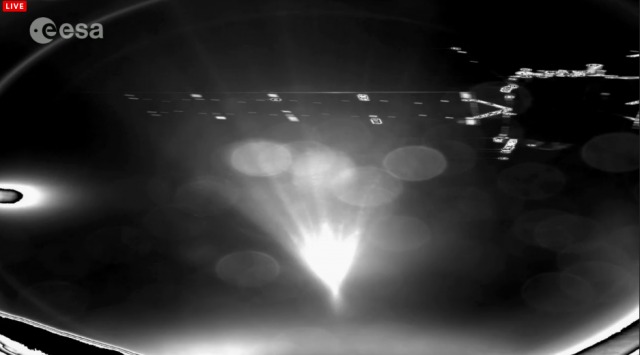
UPDATE 4: Despite words spoken in the control room shortly after touchdown, the ESA has now confirmed that the harpoons that were supposed to hold Philae in place have not fired. There is some indication that the lander has shifted on the surface of the comet, but it's stayed on the surface for several hours now.
UPDATE 3: There's cheering in the control room as signal has been received from Philae, indicating it is on the surface of comet 67P/Churyumov-Gerasimenko. Someone in the control room has just said "if it would have bounced, we would have lost this," which suggests that it is remaining on the surface. We now have confirmation that the harpoons have attached and have reeled Philae in, placing the landing gear on the surface.
UPDATE 2: The landing window is open, meaning that Philae could touch down at any time. We're still a few minutes away from the expected touchdown.

UPDATE: Philae has successfully separated from the Rosetta orbiter and is on its way towards the surface of comet 67P/Churyumov-Gerasimenko. Both Philae and Rosetta are in contact with Earth, and the landing legs on Philae are deployed.

The European Space Agency's Rosetta mission took roughly a decade from launch to approach its ultimate destination: the comet 67P/Churyumov-Gerasimenko. Since then, it's entered a close orbit and has been providing spectacular images of the surface of this alien world. But later today, it's set to start its most ambitious activity yet, the launch of the Philae lander, which is intended to set up a monitoring system on the comet's surface itself. The ESA will livestream events from mission control starting at 4pm US Eastern time today (19:00 GMT).
Philae is a small, solar-powered lander that contains 10 instruments that are intended to examine the composition of the comet, both at its surface and internally. There's also a small drill that will obtain samples up to 30 cm deep at the landing site. All that comes from a power budget that averages eight Watts when the sun is shining on it.
The weight budget for the Rosetta mission, however, didn't allow for any engines or guidance systems. Instead, Philae will simply be released by the orbiter and left to drift to the comet's surface, driven by the initial momentum of the separation and pulled by the body's weak gravity. Once in motion, no course corrections will be possible during the seven hours it will take to reach the comet's surface.
Initial maneuvers will see Rosetta, which is currently orbiting at 30 km, shift direction to move toward the comet's surface. Separation will occur around 3:30am tomorrow (8:30 GMT) with landing expected around 11:00am if all goes well. We'll have updates as warranted, or you can tune in to the ESA's livestream.
reader comments
173